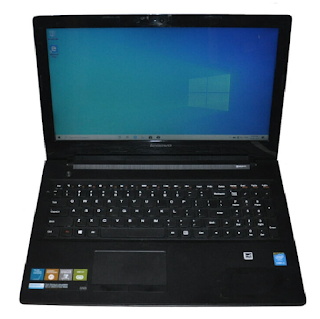VGA Driver Lenovo G50-70 Driver | AMD, Intel - Graphics Card For Windows
Caring for a Lenovo G50-70 laptop and ensuring proper cooling is crucial for maintaining its performance and longevity. One essential aspect of this care is maintaining the laptop's thermal paste.
The thermal paste in a laptop is a conductive material that is applied between the processor and the heat sink to ensure efficient heat transfer. Over time, the thermal paste can dry out, harden, or become less effective, leading to poor thermal conductivity and potential overheating issues. Therefore, it is important to regularly check and replace the thermal paste in your Lenovo G50-70 laptop.
Before delving into the specifics of caring for thermal paste, it is essential to address general care and maintenance of the laptop. Regularly cleaning the laptop's cooling system and preventing dust accumulation is the first step. Dust particles can obstruct the cooling fans and vents, leading to decreased airflow and ineffective heat dissipation. Use a can of compressed air or a small brush to gently remove dust from the cooling vents, fan, and other crevices.
Now, let's focus on the thermal paste. First, gather the necessary tools and materials. You will need a cleaning solution (isopropyl alcohol works well), lint-free cloth, thermal paste (preferably a high-quality one), and a small applicator or plastic card for spreading the paste.
1. Prepare the laptop: Shut down the laptop and unplug it from the power source. Allow the laptop to cool completely before proceeding.
2. Remove the battery: Although it is not necessary, removing the laptop battery can provide easier access to the internals and prevent any accidental power-on while working with the hardware.
3. Open the laptop: Depending on your level of comfort and experience, you can either follow the manufacturer's instructions or seek professional assistance to open the laptop and access the processor and heat sink.
4. Clean the surfaces: Use isopropyl alcohol and a lint-free cloth to clean the old thermal paste residue from both the processor and heat sink. Ensure that no lint or debris remains on either surface.
5. Apply new thermal paste: Apply a small, pea-sized amount of thermal paste to the center of the processor. Be careful not to apply too much paste, as it can lead to overheating. Use a plastic applicator or card to spread the paste evenly and thinly across the processor's surface.
6. Reassemble the laptop: Carefully position the heat sink back onto the processor, ensuring it is aligned correctly with the screw holes. Tighten the screws evenly in a cross pattern to distribute pressure evenly.
7. Clean the exterior: Before closing the laptop, take the opportunity to clean the exterior using a soft, lint-free cloth. Remove any fingerprints, smudges, or dust from the screen, keyboard, and other surfaces.
8. Test and monitor: After reassembling the laptop, power it on and check the temperature. Use software utilities like HWMonitor to monitor the temperature of the CPU and ensure that proper heat dissipation is occurring.
9. Repeat as necessary: Thermal paste should be replaced every 2-3 years or whenever you notice a significant increase in temperature. Keeping a regular replacement schedule will help maintain optimal heat transfer and prevent any potential thermal issues.
By following these steps, you can care for your Lenovo G50-70 laptop and ensure the efficient cooling of your processor by maintaining the thermal paste. This proactive approach to laptop care will help safeguard against overheating, maintain performance, and ultimately prolong the lifespan of your valuable device.
Video Graphics Accelerator Type:
- AMD Radeon R5 M230 - 2GB VRAM
- Intel HD Graphics 4400
* (optional)
VGA DRIVERS
((Driver)) INTEL Graphics card software for Windows 10 (64bit) | 84MB
((Driver)) AMD Graphics card software for Windows 10 (64bit) | 203MB
((Driver)) INTEL Graphics card - display software for Windows 8.1 (64-bit) | 66MB
((Driver)) AMD Graphics card - display software for Windows 8.1 (64-bit) | 273MB
((Driver)) INTEL VGA Graphics card software for Win 7 (64bit) | 69MB
((Driver)) INTEL VGA Graphics card software for Win 7 (32bit) | 39MB
((Driver)) AMD VGA Graphics card software for Win 7 (32bit / 64bit) | 238MB
((Driver)) AMD Graphics card software for Windows 10 (64bit) | 203MB
((Driver)) INTEL Graphics card - display software for Windows 8.1 (64-bit) | 66MB
((Driver)) AMD Graphics card - display software for Windows 8.1 (64-bit) | 273MB
((Driver)) INTEL VGA Graphics card software for Win 7 (64bit) | 69MB
((Driver)) INTEL VGA Graphics card software for Win 7 (32bit) | 39MB
((Driver)) AMD VGA Graphics card software for Win 7 (32bit / 64bit) | 238MB
